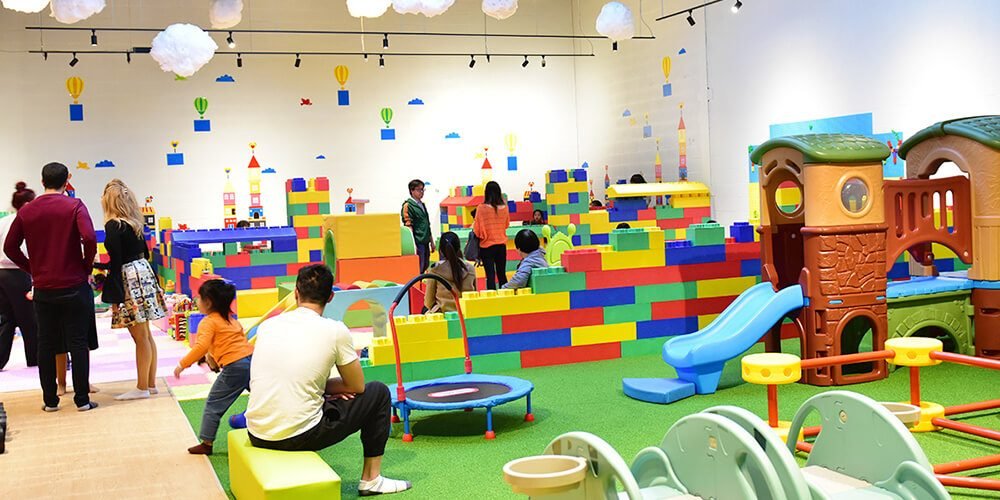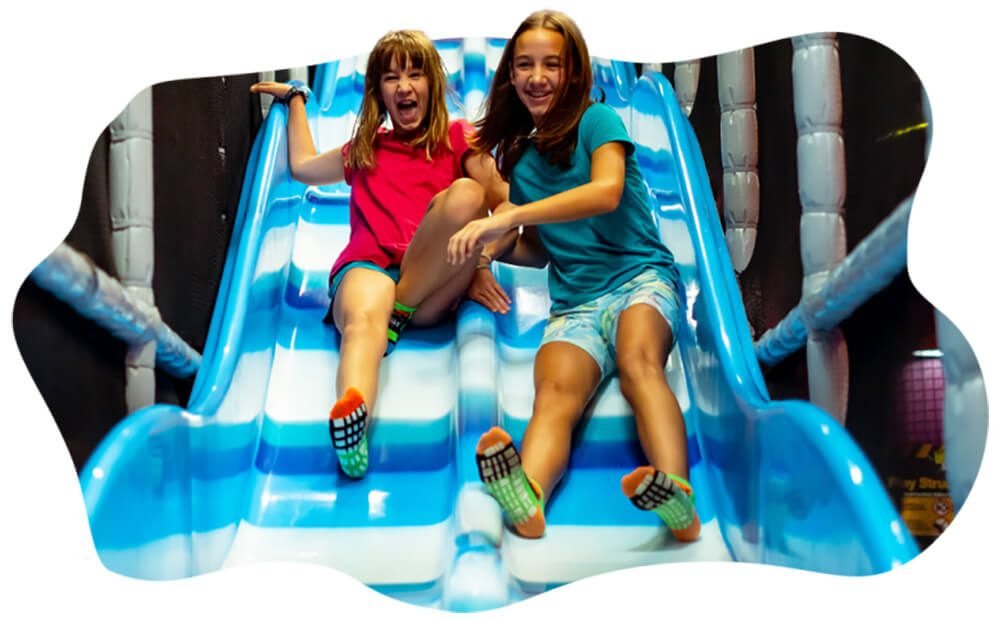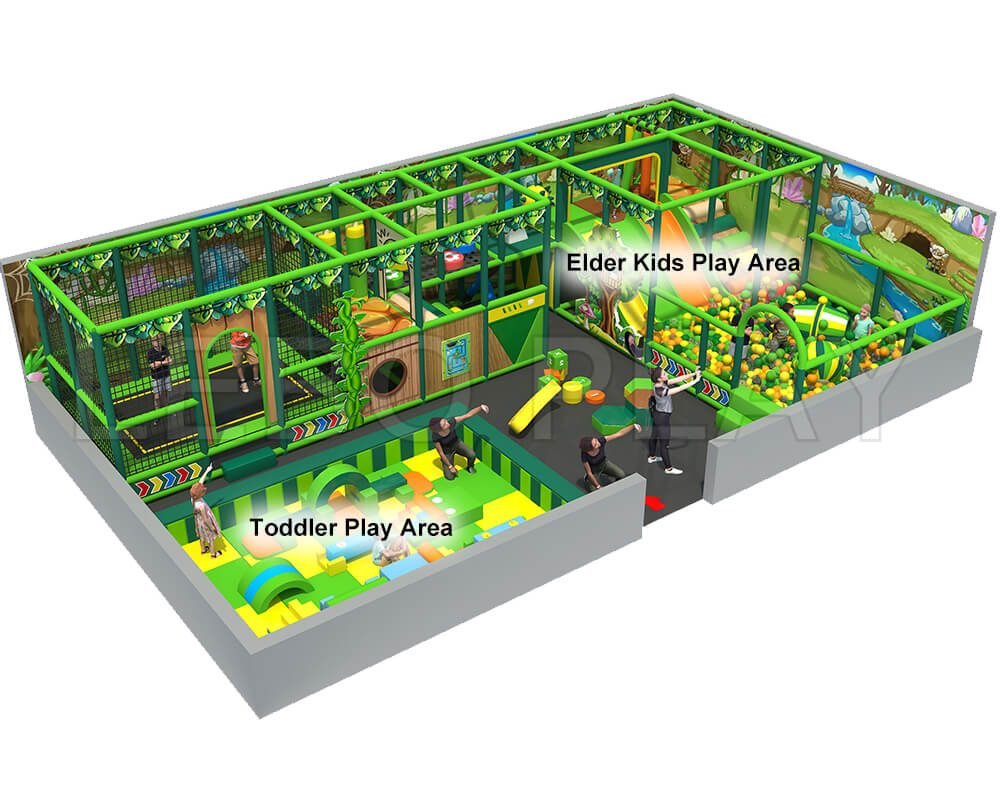Imagine this: You’re at an indoor playground with your child, a place where joy meets excitement, where kids can run, climb, and explore with a freedom that makes your heart sing. But beneath the laughter and padded indoor play structures, there lurks a danger that many parents overlook. While indoor playgrounds are designed to be safe havens, accidents can happen, often due to preventable factors. As parents, how can we ensure our children’s utmost safety while they have the time of their lives? It’s time to take those worries and turn them into actionable steps that guarantee not just fun, but a secure playtime adventure.
Ensure children are supervised, check equipment for damages, dress kids in non-slip socks, teach not to run, watch for overcrowding, use age-appropriate areas, sanitize hands often, and be aware of emergency exits.
We’ve covered some basic tips, but as a parent and professional in the indoor playground business, I can tell you that there are more layers to ensuring a safe play experience. Let’s delve into more detailed guidelines and insights, like how to pick the right indoor playground equipment or dressing your child appropriately. Trust me, even the smallest details matter when it comes to child safety.
Essential Parental Guidelines for Indoor Playground Safety
1. Select Age-Appropriate Indoor Playground Equipment
When you pick a safe indoor playground for your kids, look at the age range of the play area equipment. Many indoor kids play places are designed with different zone for different age groups. This is important because it helps prevent kids from getting hurt because of their size difference.
We often designed an indoor playground that had a separate area for toddlers and older kids. Parents loved it because it kept the little kids from getting hurt and allowed the older kids to play without fear of running over the little ones.
2. Inspect Indoor Play Area Equipment
Before allowing your child to play, check for damaged floor mats, ropes that are frayed, or anything else that looks dangerous. Make sure the equipment is in good condition and appropriate for your child’s level of development. If something doesn’t look safe, tell somebody who works there.
3. Keep An Eye On Your Child At All Times
Parents should keep an eye on their kids. This means you need to watch what they’re doing and be ready to step in when necessary. Make sure this indoor playground facility has well-trained staff who are supposed to be watching who can help if something happens.

4. Pay Attention To Your Child's Clothing
Comfortable clothing is a must! Avoid loose drawstrings or accessories that could get caught. I suggest non-slip socks to help your child have better traction on the floor. Don’t let your child wear things like necklaces that can get caught and strangle them.

5. Cultivate Safe Play Behaviors In Your Child
Teach your kids how to behave on the playground. Tell them to take turns and not to be rough. It’s essential to familiarize them with playground rules and explain why certain behaviors, such as explaining to them the dangers that come with climbing too high or running around where the other kids are playing.
6. Choose a Clean Indoor Playground with Regular Sanitization Routines
Pick an indoor play place that is clean. Look for indoor playground structures that have a regular schedule for cleaning and sanitizing. A clean environment is just as important as safe equipment. I’ve noticed that playgrounds that post about their cleaning routines often receive positive feedback from parents.
7. Plan Your Visit Wisely
Timing can greatly impact your experience. Visiting during off-peak hours, such as weekday mornings, can help avoid crowded conditions. I often tell parents to check if the playground uses security measures like wristbands to ensure kids don’t wander off.
How Parents Can Identify a Well-Maintained Indoor Playground
To identify a well-maintained indoor playground, parents should look for several key indicators that reflect the facility’s commitment to safety and cleanliness. Here are essential factors to consider:
1. Equipment Condition
Look for visible signs of damage on the equipment. Facilities that prioritize safety often have regular inspections. Make sure the bolts, screws, and fasteners are tight and intact. I remember visiting a playground where the staff conducted daily checks, and it was a reassuring sight for parents.
2. Cleanliness
Before you go to the indoor playground, go online to platforms like Google Reviews, Yelp, or TripAdvisor and read the feedback from other parents. Look for comments specifically about cleanliness and maintenance. Check out the facility’s social media pages to see if they post about their cleaning processes. Sometimes, businesses will show you how they clean to give you peace of mind. Call or email the indoor play structure facility and ask them about their cleaning schedule and procedures. A reputable place should be open and willing to share that information with you.
3. Staff Training and Supervision
Inquire about the training of the staff. Well-maintained facilities typically have trained staff supervising play areas, ready to respond to incidents. This reassurance is a significant factor for many parents.
4. Up-to-Date Equipment
Look for commercial indoor playground equipment that maintain and update their equipment regularly. Facilities that showcase modern, well-maintained equipment tend to attract families seeking a safe and enjoyable experience. I once visited a playground that frequently updated its equipment, and parents were thrilled with the improvements.
Conclusion
As a parent and a custodian of children’s play, there’s a formidable amount of concern when it comes to raising the bar on safety. Each measure you take cuts down the risk of injuries, ensuring that the memories you create at indoor playgrounds with your children are happy ones. Remember, the goal isn’t to restrict play but to enable it safely. By following the steps above, you can have peace of mind knowing that every visit to an indoor playground is as safe and delightful as possible. Here’s to happy, healthy playing!



